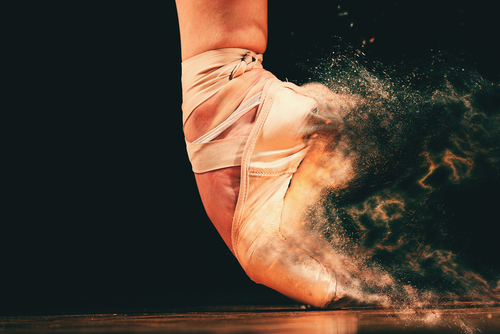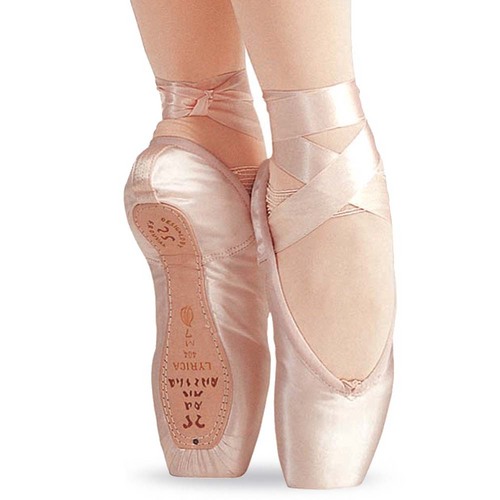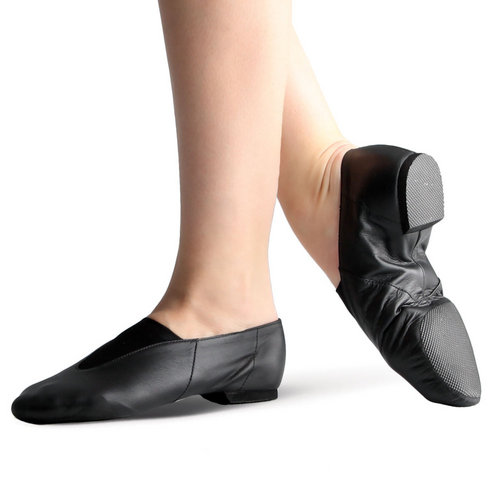Dance Talk
Our dance season never ends. Learn dance tips from the best.
How To Improve Feet Strength For Ballet And Dance


When it comes to the human body, the feet are a complex part of it. In fact, of the over 200 bones found throughout our anatomy, a pair of feet are home to 52 of them. On top of that, the foot and ankle contain over a hundred muscles, many of which need to be engaged during dance techniques, such as pointe work in ballet shoes or ball changes in jazz shoes.
That's why, as a dancer, it's so important to focus on strengthening your feet. For you, your feet do more than just hold you up as you walk and run, like they do for the average person. They serve as a vital source of balance, support and propulsion, whether dancing on the stage or rehearsing in the studio.
To ensure your feet are well cared for and as strong as possible, here are some tips to help you in the process:
Exercise your feet.
Just like your arms and legs need exercise to grow strong, so too do your feet. And you can do many different isolation exercises in order to enhance the strength of your feet. For instance:
- Sit on the floor, then pointe and flex your feet with a resistance Thera-band on the top half of your feet. Do the process slowly so you can really feel the resistance and work against it.
- Sit on the floor with your toes in pointe position. Then flex them up and then back into pointe position. Repeat a dozen times and rest.
- Sit in a chair with your feet in parallel position on the floor. Then dome the metatarsal joints, or the arch, up and pull your heels toward your toes in slow, small movements.
- In standing position, place a ball between your feet, toward the heels. Squeeze and rise up into demi-pointe, aiming to keep your weight balanced and avoiding rolling out toward your pinkies or in toward your big toes. Lower slowly and repeat 15 to 20 times.
However, when it comes to strengthening your feet, nothing should replace a daily routine with footwork. This will dramatically help your feet muscles get stronger over time.
Also, don't focus all of your efforts on pointe work. Doing so can actually have a negative impact on foot strength. This is especially true for younger dancers or if you're just starting out in pointe shoes. That's because beginner dancers tend to rely on their ankles too much when first learning pointe, which can be a detriment to foot strength. Likewise, they tend to move quickly through movements, which also puts the focus on the ankle, impacting foot strength, as well. Instead, it's important to take the focus off of speed and instead strive for techniques that build strength and also protect the feet, rather than harm them.
Be aware of the muscles you're working.
When you are working on your feet, be conscious of your movements. Don't go through them without a thought. Instead, work to actively engage each and every muscle in the part of the foot you're working. Also, don't simply mindlessly put your feet into positions. Understand, too, why those positions are important and how they build strength in your feet. This raised awareness will help you get more out of your strength training efforts.
Focus on good technique.
If you want to keep your feet strong and healthy, it's vital to focus on good technique. For instance, if you perform a jump incorrectly and start off with a shallow plie, it's going to impact your foot muscles and can even cause injury.
Care for your feet properly.
Beyond building strength and using proper technique, it's also important that you care for your feet properly. While dancers' feet are notoriously beaten up in appearance, there are steps you can take to improve their overall health. For instance:
- Keep your toenails short and cut straight across. Don't file them into a curve or keep them long, which can lead to an ingrown toenail. When you cut your toenails, there should be just small sliver of white left at the top. Use sharp clippers, not scissors, to get the best cut possible.
- Only use nail polish for special events. It's important that you keep regular tabs on your toes. And to do so, you need to be able to see the them fully, including the nail. If, for instance, you develop a bruise, you won't be aware of it if your nails are covered in bright red polish. Likewise, it's harder to catch an ingrown nail early if you can't see your toenails.
- Treat blisters with care. They're a normal part of a dancer's life, so you're going to have to accept blisters when you do develop them. Just make sure you treat them properly. If it's a blood blister, then simply put a Band-Aid over it and leave it alone. If, however, it's a clear blister, then use a sterile needle to pop it. Drain it and cover it with a bandage until it heals completely.
Wear proper fitting dance and jazz shoes.

Dance shoes typically need to fit tighter than your regular street shoes. However, if you dance in shoes that are too small, it actually leaves your feet in a lot of pain. So make sure you get shoes that are the right fit, whether they're ballet shoes or jazz shoes.
If you'd like to find stylish and affordable dance shoes and dance wear that fit like a glove, then shop online at Just for Kix. From jazz shoes to dance shorts, we offer all the apparel and accessories you need to look and feel great on the stage and in rehearsals.

Follow Us
Follow Us online, join our conversations, engage with our teams around the world!